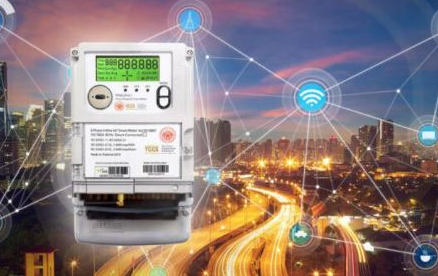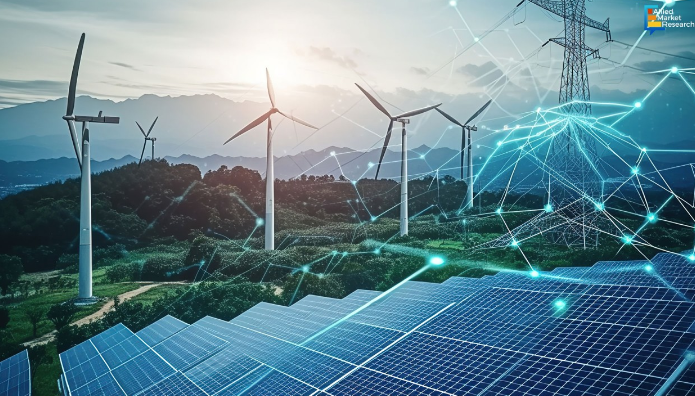In the modern world, energy is animating force of every economy. The systems we use to generate, distribute, and consume electricity are critical to maintaining our societies’ daily functions.
However, with increasing concerns over climate change, growing energy demands, and the need for improved energy efficiency, traditional electrical grids are becoming outdated. In response to these challenges, the concept of the smart grid has emerged as a game-changer.
Smart grid technology offers a solution to some of the most pressing issues faced by the global energy sector, from integrating renewable energy sources to improving the resilience of the electrical grid.
As the world strives to meet sustainability goals, smart grid technology is becoming increasingly important for shaping the future of energy management.
Understanding the Smart Grid

At its centre, a smart grid is an advanced electrical grid that uses digital communication technology to amplify the generation, distribution, and consumption of electricity.
Unlike customary grids, which depend on a one-way flow of electricity from power plants to consumers, smart grids allow a two-way flow of both electricity and data. This allows for immediate monitoring, control, and enhancing of energy usage across the entire network.
By incorporating sensors, advanced meters, automated controls, and computer systems, smart grids can make the distribution of electricity more efficient, reliable, and sustainable.
The key difference between a traditional grid and a smart grid lies in the use of information technology (IT). Smart grids integrate advanced sensors, smart meters, and software that collect and analyze data on energy consumption, grid performance, and system health.
This data is used to identify inefficiencies, predict potential outages, and enable automated responses to changing energy demands. For instance, if an electrical fault occurs in one part of the grid, the smart grid can quickly detect the issue, isolate it, and re-route power to minimize disruption.
This self-healing capability makes smart grids more resilient to damage and less prone to long-duration outages.
Why Smart Grids Are Important for Sustainability
One of the primary drivers behind the transition to smart grid technology is the global shift towards sustainable energy sources. As the world confronts the challenges of climate change, there is an urgent need to reduce greenhouse gas emissions and decrease reliance on fossil fuels.
The use of renewable energy sources—such as solar, wind, and hydropower—is essential for this transition. However, renewable energy presents unique challenges, particularly with its intermittency. Solar and wind power generation depends on weather patterns, meaning they cannot provide a constant, predictable supply of energy.
Smart grids help to solve this issue by improving the integration of renewable energy into the power grid. In a traditional grid, power plants produce a set amount of electricity that is distributed across the network, but with renewable sources, the amount of electricity generated can fluctuate throughout the day.
Smart grids use real-time data to better match supply with demand, ensuring that power from renewable sources can be effectively incorporated into the grid without causing instability. This flexibility makes it easier to incorporate more renewable energy without compromising grid reliability,
Moreover, smart grids authorize energy storage solutions to be more effective. Technologies like batteries and other energy storage systems can store excess energy generated by renewable sources during periods of high production and release it when demand is greater than supply.
By coordinating energy storage with renewable generation, smart grids can help ensure a steady, reliable supply of power even when solar or wind power is not available.
Benefits of Smart Grids for Consumers
The advantages of smart grids extend beyond sustainability; they also offer significant benefits for consumers. With traditional grids, consumers typically have little control over how much energy they use and when they use it.
Although,smart grids provide consumers with approach to real-time data on their energy expenditure. Smart meters, which are a crucial component of smart grid technology, allow consumers to monitor their usage on a daily or even hourly basis. This information authorize consumers to make informed decisions about their energy habits.
For instance, through smart meters and home automation systems, consumers can adjust their energy consumption to avoid using electricity during peak demand times when rates are higher.
By shifting energy use to off-peak hours, consumers can lower their energy bills and reduce the strain on the grid. Moreover, many utilities offer demand-response programs, which actuate consumers to reduce their electricity consumption during periods of high demand.
Participants in these programs can receive financial rewards or lower rates in exchange for temporarily reducing their energy use during peak times, such as on hot summer afternoons when air conditioners are running at full capacity.
These programs not only help individual consumers save money but also contribute to the overall efficiency of the grid.
By reducing demand during peak periods, smart grids can avoid the need to activate costly, less-efficient power plants that would otherwise be used to meet that demand. This helps lower overall energy costs and makes the grid more environmentally friendly by reducing the use of fossil fuels.
Enhancing Grid Reliability and Resilience
One of the most captivating features of smart grid technology is its ability to improve the reliability and suppleness of the electricity grid. Traditional electrical grids are prone to outages caused by weather events, equipment failures, and other disruptions.
These outages can be costly for consumers and businesses and can have significant economic impacts. Smart grids, however, are designed to be much more adaptive and self-healing.
The integration of sensors and real-time monitoring allows utilities to quickly detect and respond to problems on the grid. For example, if a tree falls on a power line, a smart grid can identify the location of the fault and automatically reroute power to minimize the number of affected customers.
This automated control reduces the time it takes to restore service, which is particularly important during natural disasters or extreme weather events. Furthermore, by analyzing historical data and trends, utilities can predict when maintenance is needed and proactively address issues before they lead to outages.
The Role of Smart Grids in Energy Security
Energy security is another critical issue that smart grids help address. With increasing geopolitical instability and the risk of energy supply disruptions, it is important for countries to ensure that their power grids are robust and resilient.
A smart grid’s ability to monitor and manage energy flows in real time improves grid security by identifying vulnerabilities and mitigating potential threats. The integration of distributed energy resources, such as solar panels on rooftops or small wind turbines, can also help create a more decentralized and secure energy system.
By allowing homes and businesses to generate and store their own energy, smart grids reduce the reliance on large, centralized power plants that could be vulnerable to attacks or natural disasters.
Conclusion: A Smart, Sustainable Energy Future
As the world continues to transition to more sustainable and resilient energy systems, smart grid technology will play a crucial role in shaping the future of energy. By integrating renewable energy sources, improving efficiency, and empowering consumers, smart grids help create a more reliable, flexible, and sustainable electrical grid.
The benefits of smart grids are far-reaching, from enabling greater use of clean energy to providing consumers with more control over their energy consumption. As countries work towards achieving their climate goals and securing a sustainable energy future, the smart grid will be at the forefront of the global energy revolution.
The widespread adoption of smart grid technology represents not just a technical transformation but a paradigm shift in how we think about and manage energy. Through innovation, collaboration, and investment, the smart grid offers a promising path toward achieving a more sustainable, efficient, and resilient energy system for the future.
